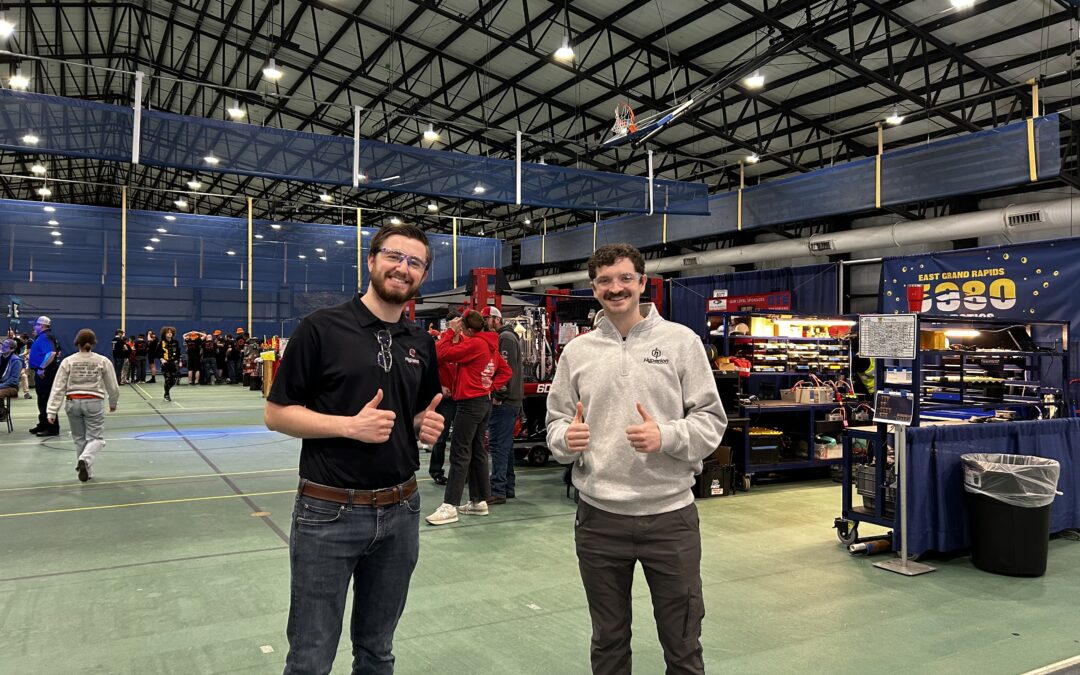
In a time where LEAN concepts are the new standard, determining the most efficient way to work is a top priority for many organizations. As manufacturers contend with limited space for production and warehousing, employing automated technologies like AGVs or AMRs may be your most cost-effective step toward efficiency.
What’s the difference between an AGV and an AMR?
While you can automate certain tasks with this technology, namely moving loads from one area of a facility to another, the need for a defined track limits flexibility for additional tasks. If the layout in a warehouse changes, for example, the team must reset the tracks before the AGVs can resume their task, decreasing the flexibility of business operations.
An AGV, or automated guided vehicle, is a vehicle capable of automatically following a guide, like a wire or track, to complete the work that you program it to do. This technology is excellent for when you need a machine to follow the same path, performing the same task repeatedly without the need for deviation.
By contrast, an AMR, or autonomous mobile robot, needs no physical guide to complete its tasks and is capable of autonomous movement. Costing up to 40% less than a regular AGV, AMRs are what we call “blank slate” robots: highly flexible programming, able to do several jobs with the same robot, and compatible with customized top modules like robotic arms, conveyors or shelving modules.
AMRs are incredibly flexible and easily integrated into nuanced applications beyond that of a regular AGV. Their autonomy allows them to complete more complex tasks across several different locations without the need for a guiding track. For example, you can send a MiR AMR with the proper attachment to fetch a specific product and bring it to the correct assembly line. The AMR can independently navigate the warehouse to find the requested product, pick it up and bring it to the exact point where it’s needed. If there’s a blockage on an AMR’s primary route to its destination, the system recalibrates to determine the best secondary route to complete its task.
An Underutilized Robot Revolution
AMRs are, as we mentioned, flexible pieces of equipment capable of meeting a wide range of needs in a manufacturing or warehouse setting, potentially several in the same day. Interchangeable top module options provide AMR users with far more possibilities than simply moving products from one area to another.
Mobile robot arms can help manufacturers complete necessary work like welding, painting, material handling, and more with products in different locations around a facility. Some, like this one we developed for the MiR200, pull their power from an advanced lithium ion power system, providing the top module with enough power to last beyond the AMR base’s charge. Utilizing mobile equipment can help increase the flexibility of the production floor by enabling manufacturers to easily move and rearrange their machines to suit the product they’re producing.
Mobile conveyors are incredibly useful in transferring a product from one conveyor to another within the facility. They’re particularly helpful in allowing manufacturers to extend their existing workflows without necessitating additional permanent conveyor fixtures. Manufacturers can save floor space within their facilities and maintain a high level of flexibility in their current and future floorplans without the costly investment in immobile conveyor fixtures.
While there are dozens of other compatible top module attachments for AMRs, custom solutions are also available to complete tasks specific to an individual business.
The Benefits of Automating with AMRs
Flexibility
By using a fleet of AMRs instead of integrating more permanent fixtures within the facility’s floorplan, businesses can increase the efficiency of their workflow while minimizing their costs and maintaining flexibility for future changes. AMRs with top modules like robot arms and conveyors can move about facilities to wherever they’re useful, only taking up space when and where they’re needed. This means a single line can be set up to suit several different purposes at different times, all depending on the production needs and available AMRs.
Safety
Increasing the safety of the work floor is arguably one of the most important benefits of integrating a fleet of AMRs in manufacturing. Human error easily leads to accidents that put employees in harm’s way. Outfitted with a myriad of sensors, cameras and programs, automated robots prevent mishaps and potentially dangerous situations.
Reduced Labor Cost
Automating is also an excellent way to cut labor costs. Manufacturers have full control over how many AMRs to implement into their facilities suited with which top modules, allowing them to automate more menial tasks or injury-prone work like heavy lifting. This allows their employees to complete other necessary tasks, increasing efficiency and reducing the amount of additional work.
Increased Productivity
Implementing a fleet of AMRs can help organizations increase their efficiency while also staying flexible enough to accommodate future growth. In a case study of Honeywell’s integration of AMR technology to their facilities, they achieved full ROI within 2 years of completing their integration project. By using AMRs to automate various processes, Honeywell has been able to support more lines with the knowledge that there’s additional growth to be had because of the support that automation allows them.
Get Started With AMRs
AMRs are an excellent avenue for manufacturers to control labor costs while driving efficiency and growth, and Hyperion’s engineering and design teams are well-suited to develop a solution that meets your business’ specific needs. To learn more about how automation can help your business achieve your goals for growth and efficiency, give us a call!



